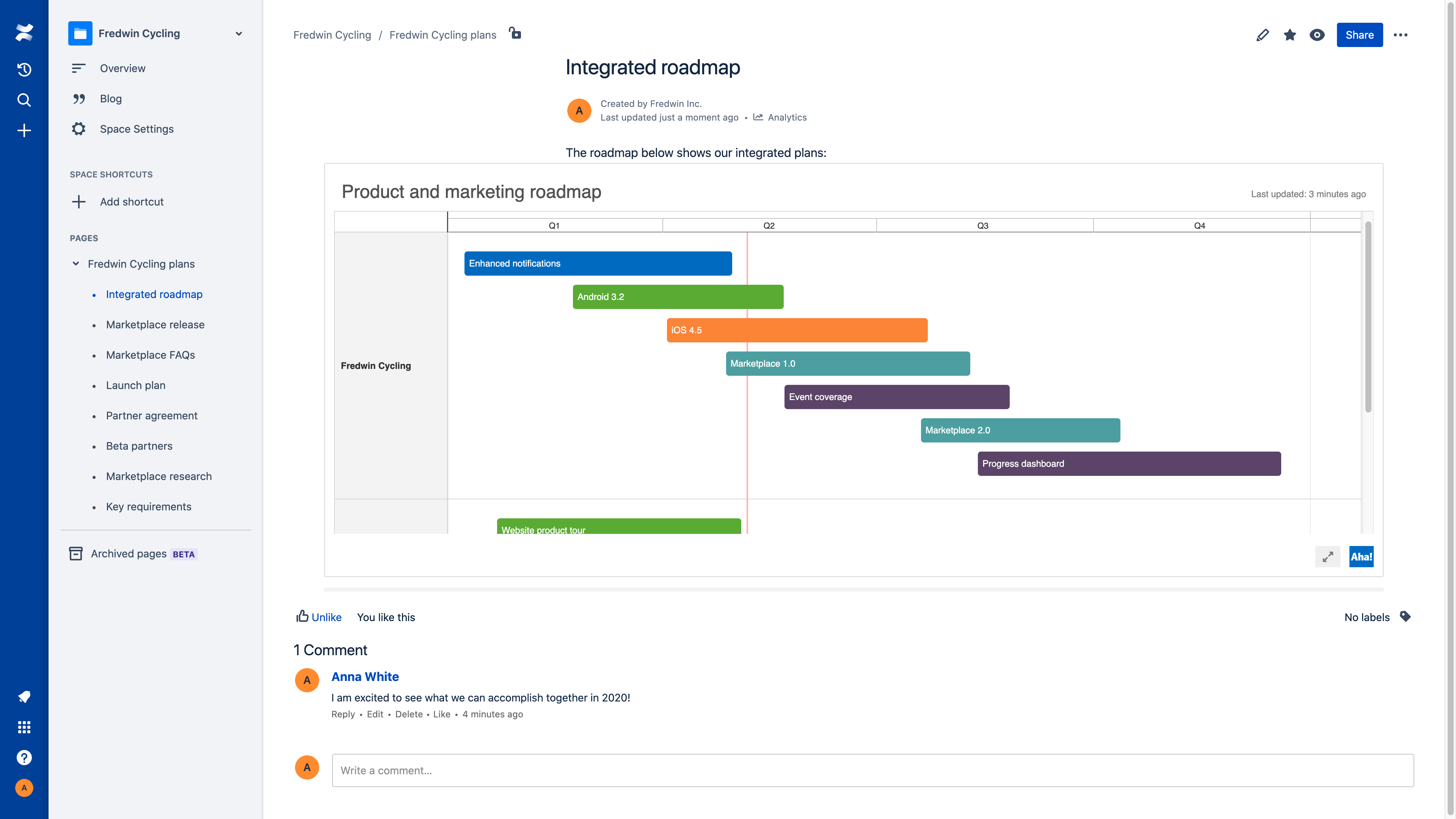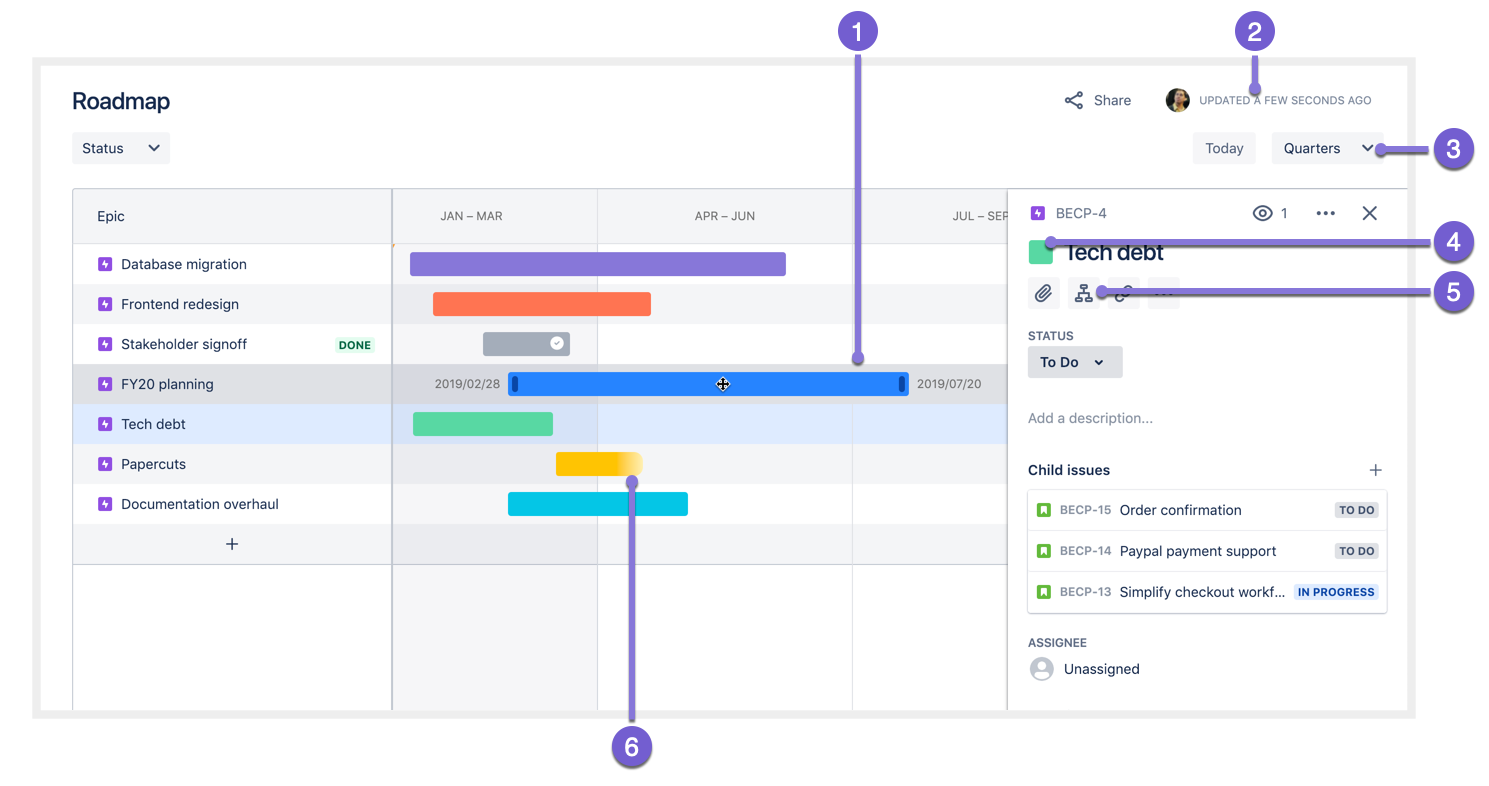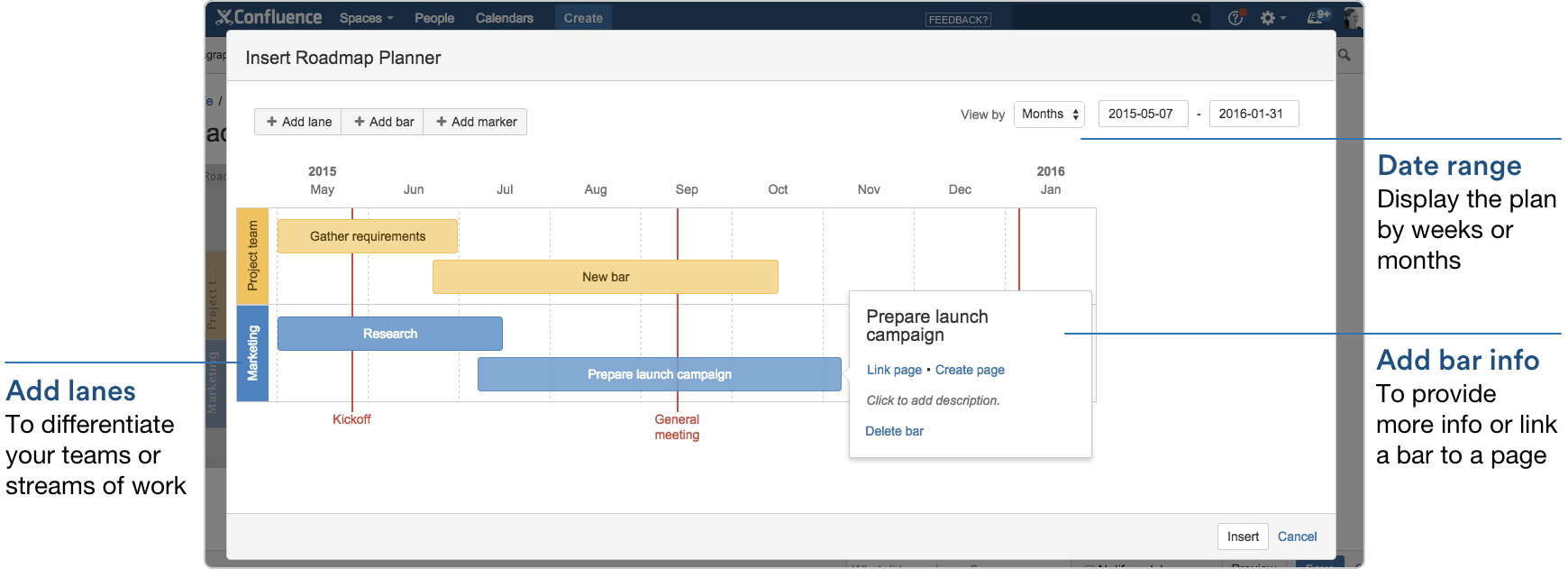

Click on a bar and you’ll see the pop-over allowing you to name the bar. Go back into edit mode of the page and double click on the macro to edit it. “Dependencies” to display key periods that the team need to be aware of, such as client holidays or events such as Christmas.“Pipeline” projects that are likely to happen but yet to be formalised approved by the client.“Approved” for all projects that have been approved by the client.In our example we are going to create 3 swim lanes: With a click and drag gesture of your mouse or trackpad you can drag the bars up and down the timeline, drag the bars into other swim lanes, and modify the bars duration by dragging out their start and end dates. When you’re in the edit view of the roadmap macro it is super simple to move the bars around. Set the displayed start and end date of the roadmap.Toggle between weeks or months in which your roadmap will be displayed.

CONFLUENCE ROADMAP PLANNER TUTORIAL HOW TO
In the last the post we looked at how to create a summary page for a programme of work using the page properties and pages properties report macros.īelow is an image of the summary page that was created. Let’s have a look at what we’re going to build.

Once you have read this post you’ll be on your way to dominating the road-mapping game :). This roadmap will give your team visibility over their current and future work streams, dependencies on internal or external events and deep linking to the confluence pages documenting the individual projects in detail. In this post, we’ll look at how to create an awesome roadmap using Confluence’s road mapping planner macro.


 0 kommentar(er)
0 kommentar(er)
